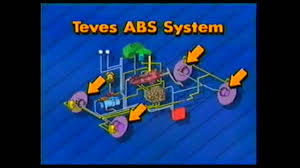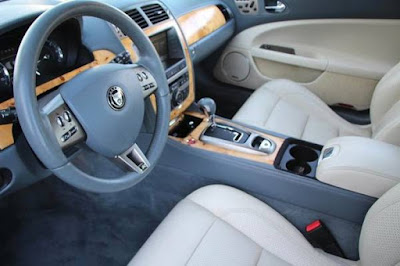 |
| Fake, Fake, Fake. |
I'm sure that the owner of this wrapped Mercedes has never owned a car that was really rusty. The whole patina thing started out with the hot rod and muscle cars guys protest against the tyranny of over restored cars. This type of presentation doesn't lend any cred to the owner in my book.
 |
| Real, Real,Real. Matt Hummel and his 356. |
On the other hand you can't help but admire someone like Matt Hummel. If you haven't checked out the Petrolicious video "Against the Grain" than you should. Matt is a very easy going guy that assembled a very nice, unrestored Porsche 356. Matt decided that he might as well drive his creation since he didn't have to worry about getting it dirty and possibly chipped up. So he drives it all over the place, even on dirt fire roads and he seems to be having a great time. Like many car enthusiasts he acquired this car years ago as a basket case, before they increased in value. Even in this unrestored state it is still worth a fair amount. In fact, these days it is probably worth a bit more than some of the better preserved or older resto examples.
I just love the car, and Matt's story. This is the kind of relationship that an enthusiast should have with their car. Strange as it might seem, this is the same relationship that most ordinary motorists have with their everyday car. They use them to go places and live their lives. They may value the car. but they aren't doting on it. They just use it.
Sometimes we car lovers get a little too precious with our much loved vehicles. Just owning the car becomes the primary motivation, whether the car is just preserved, or restored,or just rusting away in a side yard. We forget that cars are made to be fixed up and used.
Years ago I ran into a couple of guys at the local Friendship Days event who had purchased their cars back in the 1970s. Now that's not so unusual, but the kind of cars they bought is. One had an Aston Martin DB5 and the other was a 1960s Ferrari. The Ferrari owner said that his buddies thought he was crazy to pay ten thousand dollars for an old car!
Both of these cars were in clean,original, non restored condition. The bodywork was nice and straight but the paint was faded and worn in some spots. The interiors were obviously well used but repairs had been kept up and everything was quite presentable. Under the hood some of the alloy components could have used a bit of polish as there were the tell tale stains of old oil and fuel leaks.
It was a delight to see these cars in that condition. The owners were quite friendly and the owner of the Aston told me that if he restored his car than he would probably never be able to drive it again! It would be worth too much to risk anything happening to it.
Finding the right car to preserve is often up to luck. You don't want to start out with a rusty, banged up example if you can help it. Original is best. Original paint, original interior, original mechanicals. Of course, the car is bound to show some wear and tear. Often the paint can be touched up in the worst spots and the upholstery repaired and everything can be cleaned up and polished. Obviously the drivetrain should be brought back to reliable running condition.
 |
| Nope, That ain't gonna buff out! |
 |
| I would prefer not to drive it in this condition. But I probably will anyway, at least for a while! |
Sometimes things have deteriorated beyond the preservation stage. In this case, this wasn't the original paint and the interior had been redone in vinyl years ago.
On the other hand there are cars like my '96 Mustang.
The paint on my Mustang is fading gradually from the sharp looking original Lazer Red to a somewhat mellow, ripe tomato color. The rear bumper has some weathered clear coat on the top surface and there is a strange weathered thin area of paint behind the driver's door. It's gotten thinner over my ownership. I invested in a new convertible top years ago, which still looks very good. Inside, the cloth tweed like seats have held up well. There was a worn area on the driver's seat lower cushion where the width adjustment mechanism blade wore a hole in the seat bottom fabric.
| I still wonder what could have caused this. |
Just recently I decided to fix that worn spot. I added some foam rubber to cover the edge of the adjuster blade and into area around the seat bottom cushion. Then I sewed up the hole and hid the repair with some black liquid shoe polish.
| Not too bad for twenty minutes of work. |
But, they have not been actively abused or ignobly ignored or forgotten.
Right now my XJ6 is sitting in the driveway exposed to the first torrential rainstorms of Winter. (Finally!) I've been driving it everyday for the last couple of weeks. Soon it will trade spots with my '96 Mustang in the garage.
The XJS will remain in the garage as I sort out it's problems. It's got a pretty worn out top and I'm not going to let it fill up with rain water. My Mustang had to suffer that indignity when I first got it years ago. Hopefully it will take it's place in my fleet rotation some day, when it's earned it's spot in the driveway of daily usage.
Still, I've decided that I've got to get the car into actual use, or what's the point?
The Skin Horse was right. Becoming real doesn't happen to things that break easily, have sharp edges, or have to be carefully kept. It only happens to the things that you can actually use, live with, and build up a history of memories. Cars like my Mustang. Can it happen to my XJS? I don't know, but I'm going to give it a try.
2020 is going to be the year of the XJS.
Happy New Year to All! Here's hoping that all your dreams and schemes (car related) come to fruition.






















